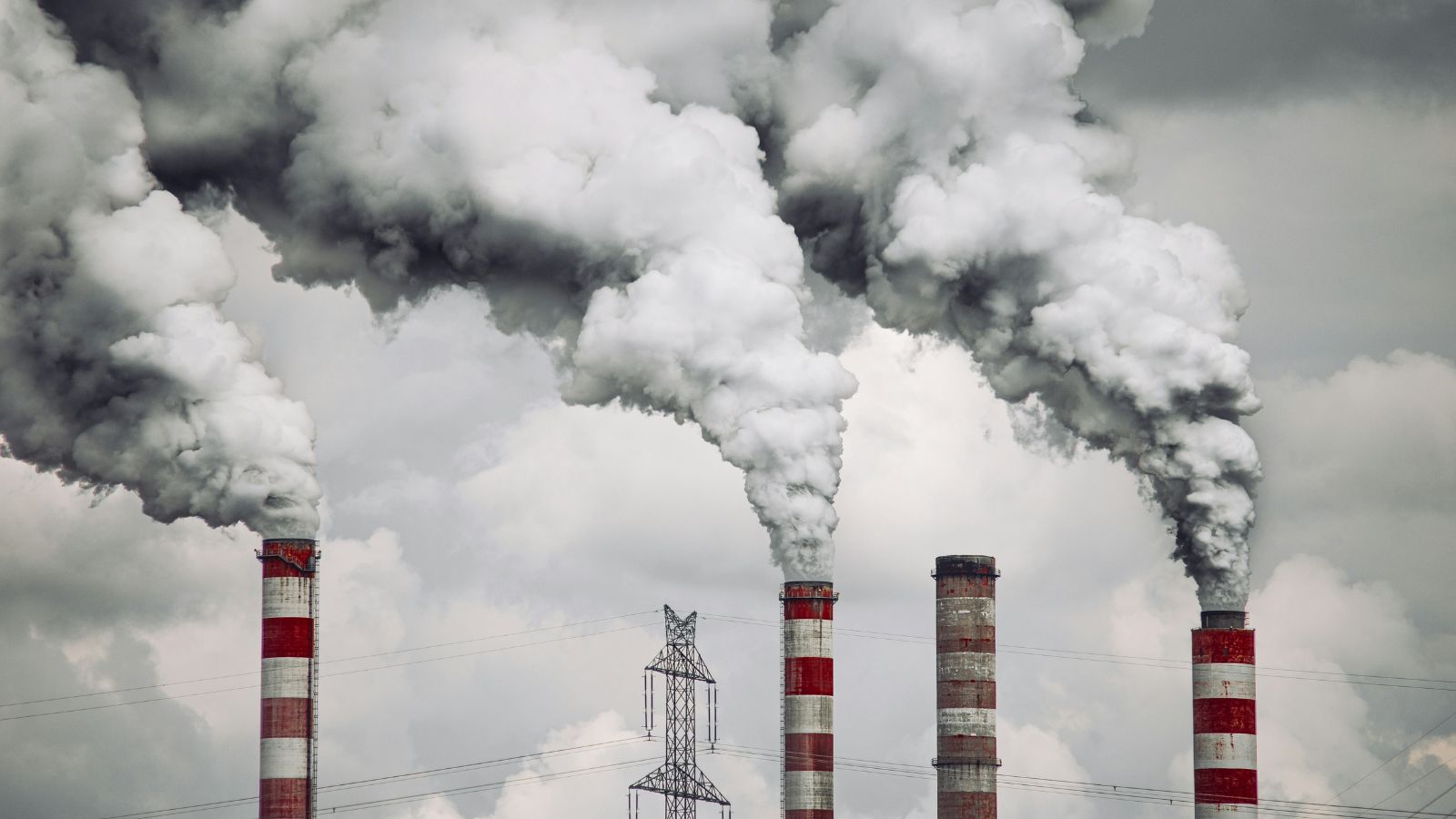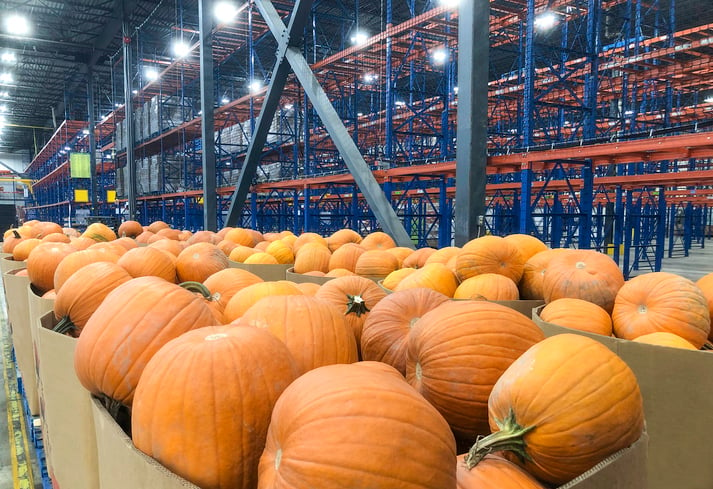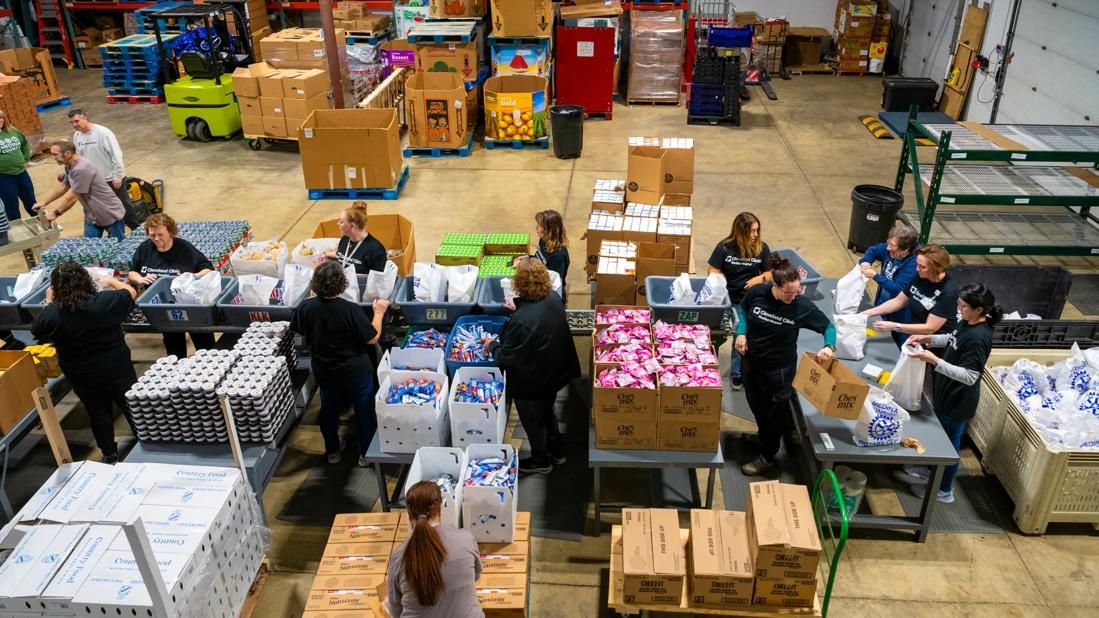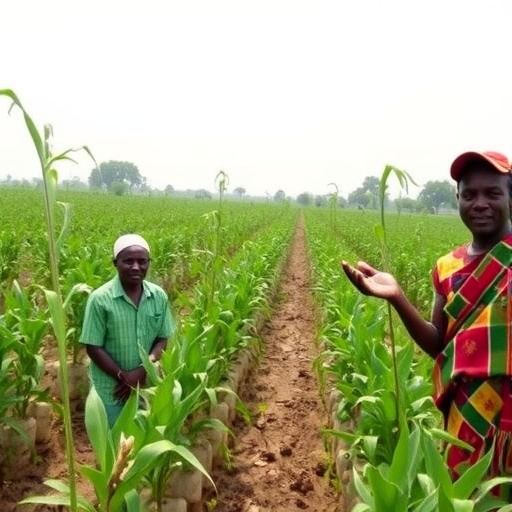Addition of longer wavelength absorbing chlorophylls into crops could increase their photosynthetic productivity by 26% – Nature

Executive Summary
This report evaluates a novel bioengineering strategy to enhance crop productivity by expanding the photosynthetically active spectrum of light. Faced with the challenge of achieving Sustainable Development Goal 2 (SDG 2: Zero Hunger), which requires a significant increase in food production by 2050, current rates of yield improvement are insufficient. This study models the introduction of far-red (FR) light-absorbing chlorophylls (Chl d and Chl f), found in some cyanobacteria, into soybean canopies. Using a 3D canopy model, simulations show that enabling crops to utilize FR photons (700–800 nm) could increase canopy CO2 assimilation by up to 26%. This enhancement is most significant in lower canopy leaves, which are typically light-starved but rich in FR photons. A proposed strategy, regulating FR absorption based on the light quality within the canopy, maximizes photosynthetic gains while minimizing photodamage risk. This innovation promises not only to boost crop yields but also to improve water use efficiency, contributing to SDG 6 (Clean Water and Sanitation), and reduce pressure on land expansion, supporting SDG 15 (Life on Land) and SDG 13 (Climate Action). The findings present a compelling case for investing in this bioengineering approach as a vital tool for achieving sustainable agricultural intensification and global food security.
Introduction: Addressing Global Food Security through Photosynthetic Innovation
The Challenge of SDG 2: Zero Hunger
The global imperative to achieve SDG 2 (Zero Hunger) is challenged by a projected need for up to 56% more food by 2050 compared to 2010 levels. This demand is exacerbated by yield losses from climate change. Current rates of crop improvement are inadequate to meet this future requirement, necessitating transformative innovations in agriculture. Bioengineering photosynthesis, a process with significant untapped potential in major crops, has emerged as a primary target for increasing yield potential. This report details a novel approach that could substantially increase crop photosynthetic productivity, directly addressing the goals of sustainable food production and ending hunger.
A Novel Approach: Expanding the Photosynthetic Spectrum
Higher plant photosynthesis is driven almost exclusively by visible light (400–700 nm), leaving the abundant far-red (FR) portion of the solar spectrum (700–800 nm) largely unused. However, certain cyanobacteria have evolved to utilize this energy by incorporating specialized chlorophylls:
- Chlorophyll d (Chl d): Utilized by species like Acaryochloris marina, allowing for efficient photosynthesis up to 750 nm.
- Chlorophyll f (Chl f): Found in small amounts in FaRLiP (Far-Red Light Photoacclimation) cyanobacteria, enabling the use of photons up to 800 nm.
In a typical crop canopy, upper leaves absorb most visible light, while lower leaves are starved of it. However, these lower leaves are bathed in transmitted FR light. Introducing FR-absorbing chlorophylls could therefore activate these underperforming lower leaves, significantly boosting the entire canopy’s carbon assimilation and contributing to more efficient land use, a key tenet of SDG 12 (Responsible Consumption and Production).
Methodology: Modeling Sustainable Crop Enhancement
Simulating Photosynthetic Performance in Soybean Canopies
To quantify the potential benefits of FR light utilization, a sophisticated 3D architectural model of a field-grown soybean canopy was employed. This model simulates the complex light environment throughout the day, accounting for:
- The changing solar angle and the resulting sun-shade dynamics.
- Wavelength-specific light absorption, reflection, and transmission by leaves.
- Coupling of light absorption with a biochemical model of photosynthesis to predict CO2 assimilation and transpiration for every part of the canopy.
This framework allows for a precise estimation of the additional carbon gain that would result from the introduction of Chl d and Chl f, providing a robust assessment of the technology’s potential impact on agricultural productivity.
Evaluating Strategies for Far-Red Light Utilization
Two primary strategies for incorporating FR-absorbing chlorophylls were simulated to optimize benefits and minimize risks such as photodamage in light-saturated upper leaves:
- Strategy 1 (Constant Absorption): A uniform fraction of FR absorption is applied to all leaves throughout the canopy.
- Strategy 2 (Regulated Absorption): The concentration of FR-absorbing chlorophylls, and thus the FR absorption fraction (AbsFR), is increased in response to the rising ratio of FR to red light (FR/R) deeper within the canopy. This mimics natural photoacclimation processes and can be regulated by phytochrome light sensors.
These strategies were evaluated for their impact on canopy CO2 assimilation, photon absorption, transpiration, and overall water use efficiency (WUE), providing insights into the most sustainable implementation pathway.
Key Findings: Potential for Enhanced Crop Productivity and Resource Efficiency
Impact of Chlorophyll d and f on Photosynthesis
The simulations demonstrate that incorporating FR-absorbing chlorophylls would significantly enhance soybean canopy photosynthesis, particularly during the critical reproductive stages when yield is determined. The potential gains are substantial and directly address the productivity targets of SDG 2.
- With Chl d (utilizing 701–750 nm light): Canopy CO2 assimilation (Ac) increased by up to 13.7%.
- With Chl f (utilizing 701–800 nm light): Canopy CO2 assimilation (Ac) increased by up to 26.1%.
These gains represent a massive leap compared to the typical 1-2% annual yield improvements achieved through conventional breeding, highlighting the transformative potential of this technology.
Optimizing for Canopy-Level Efficiency and Sustainability
Comparing the two implementation strategies revealed the superiority of a regulated approach for sustainable intensification:
- Strategy 1 provided significant gains but increased the risk of photodamage by concentrating excess energy absorption in the already light-saturated upper leaves.
- Strategy 2, by linking Chl d/f synthesis to the high FR/R ratio in the lower canopy, targeted the enhancement where it is most needed. This approach improved the distribution of light absorption, boosted CO2 uptake in light-starved lower leaves, and reduced the risk of photoinhibition in upper leaves. This strategy yielded a 26.1% increase in daily CO2 assimilation (with Chl f) while being inherently safer and more efficient.
Implications for Water and Land Use (SDG 6 & SDG 15)
A critical aspect of sustainable agriculture is the efficient use of resources. This research shows that enhancing photosynthesis through FR light utilization can improve resource efficiency, contributing to multiple SDGs.
- Water Use Efficiency (SDG 6): While increased light absorption leads to a rise in transpiration, the gain in CO2 assimilation is proportionally greater. The simulations show that Strategy 2 improves daily average water use efficiency (WUE) by up to 1.2%. This enhancement means more crop biomass is produced per unit of water consumed, a vital benefit for agriculture in water-limited regions.
- Land Use Efficiency (SDG 15): By increasing productivity per unit of land area by over 20%, this technology can help meet rising global food demand without requiring the conversion of forests and other natural ecosystems into farmland. This directly supports the preservation of biodiversity and the goals of SDG 15 (Life on Land).
Discussion: Feasibility and Contribution to Sustainable Development Goals
Translating Increased Photosynthesis to Yield Gains (SDG 2)
Extensive field research has established a strong link between increased photosynthesis and increased crop yield. For soybean, experiments elevating atmospheric CO2 to boost photosynthesis have resulted in corresponding yield increases of 20% or more. Therefore, the predicted 26% increase in carbon assimilation during the critical pod-filling stage is expected to translate into a similarly significant increase in seed yield, making a direct and substantial contribution to achieving SDG 2.
Bioengineering Pathways and Resource Management (SDG 12)
The bioengineering required to implement this technology is considered feasible. The enzyme for Chl f synthesis has been identified, and its expression in a single gene is sufficient for production. While the integration into plant photosystems requires further research, initial studies are promising. Furthermore, this approach aligns with the principles of sustainable production (SDG 12) by improving nitrogen use efficiency. In soybean, additional photosynthate has been shown to fuel increased nitrogen fixation, meaning that higher yields can be achieved without additional nitrogen fertilizer, reducing the environmental impact of production.
Conclusion: A Pathway to Sustainable Agricultural Intensification
This report provides the first quantitative assessment of introducing FR-absorbing chlorophylls into a major crop, revealing an immense potential to increase photosynthetic productivity by up to 26%. The proposed strategy of regulating chlorophyll expression via phytochrome sensing offers a safe and efficient pathway that enhances carbon assimilation, improves water use efficiency, and avoids photodamage. This bioengineering approach represents a transformative opportunity to accelerate crop improvement at a rate far exceeding conventional methods. By significantly boosting yields on existing agricultural land, this technology can play a pivotal role in achieving SDG 2 (Zero Hunger) while simultaneously advancing goals for responsible resource use (SDG 6, SDG 12) and environmental protection (SDG 15). The findings strongly justify the research and development effort required to translate this concept into field-ready crops, offering a powerful tool to build a more sustainable and food-secure future.
Analysis of Sustainable Development Goals in the Article
1. Which SDGs are addressed or connected to the issues highlighted in the article?
The article primarily addresses issues related to global food security, agricultural productivity, and sustainable resource management. Based on its content, the following Sustainable Development Goals (SDGs) are relevant:
- SDG 2: Zero Hunger: The central theme of the article is the need to increase food production to meet the demands of a growing global population. The research focuses directly on enhancing crop yield through bioengineering, which is a core component of achieving food security and ending hunger.
- SDG 9: Industry, Innovation, and Infrastructure: The article presents a novel scientific innovation—bioengineering crops with far-red (FR) absorbing chlorophylls—to improve photosynthetic efficiency. This represents an advancement in agricultural technology and scientific research aimed at boosting productivity.
- SDG 6: Clean Water and Sanitation: The study evaluates the impact of the proposed bioengineering strategies on the water use efficiency (WUE) of crops. By aiming to increase yield per unit of water used, the research connects to the sustainable management of water resources in agriculture.
- SDG 15: Life on Land: The article mentions that increasing crop productivity per unit of land area can “reduce land pressure and associated environmental risks.” This implies that higher yields on existing agricultural land can help prevent deforestation and land degradation that would otherwise be necessary to expand farmland.
2. What specific targets under those SDGs can be identified based on the article’s content?
Several specific targets under the identified SDGs are directly supported by the information in the article:
- Under SDG 2 (Zero Hunger):
- Target 2.3: By 2030, double the agricultural productivity and incomes of small-scale food producers… The article’s primary goal is to significantly increase crop productivity. It states that the proposed innovation could “increase productivity by as much as 26%,” which directly contributes to this target by developing methods to boost agricultural output.
- Target 2.4: By 2030, ensure sustainable food production systems and implement resilient agricultural practices that increase productivity and production… The research explores strategies that not only increase yield but also improve water use efficiency, making agriculture more sustainable and resilient. The article notes the technology “has the potential to enhance yield per unit of water used, i.e. increase sustainability.”
- Target 2.a: Increase investment, including through enhanced international cooperation, in rural infrastructure, agricultural research and extension services, technology development… The entire study is an example of advanced agricultural research and technology development aimed at solving global food challenges.
- Under SDG 9 (Industry, Innovation, and Infrastructure):
- Target 9.5: Enhance scientific research, upgrade the technological capabilities of industrial sectors in all countries… The article is a clear example of enhancing scientific research. It describes a cutting-edge bioengineering approach (“Redesigning photosynthesis to sustainably meet global food and bioenergy demand”) that could upgrade the technological capabilities of the agricultural sector.
- Under SDG 6 (Clean Water and Sanitation):
- Target 6.4: By 2030, substantially increase water-use efficiency across all sectors… The article explicitly models and discusses the impact on water use. It finds that the proposed strategies lead to slight improvements, stating, “the daily average water use efficiency improves by 0.7%” and “enhances 0.8% and 1.2%.”
- Under SDG 15 (Life on Land):
- Target 15.3: By 2030, combat desertification, restore degraded land and soil… By proposing a method to significantly increase yields on existing farmland, the research offers a way to meet food demand without converting more forests or natural habitats into agricultural land. The article states, “increasing its productivity per unit land area in use will reduce land pressure and associated environmental risks,” which helps in preventing land degradation.
3. Are there any indicators mentioned or implied in the article that can be used to measure progress towards the identified targets?
The article provides quantitative data and discusses metrics that can serve as or relate to official SDG indicators:
- For Target 2.3 (double agricultural productivity):
- Implied Indicator (related to 2.3.1 – Volume of production per labour unit): The article provides direct quantitative estimates of increased productivity. The key metric used is the “canopy CO2 assimilation (Ac),” which is a proxy for biomass production and ultimately yield. The finding that “simulated daily Ac increases to 26.1%” serves as a powerful indicator of potential progress towards doubling productivity.
- For Target 6.4 (increase water-use efficiency):
- Direct Indicator (related to 6.4.1 – Change in water-use efficiency): The article explicitly calculates and reports on “Water use efficiency (WUE),” which is defined as the ratio of canopy CO2 assimilation (Ac) to canopy transpiration (Ec). It reports specific improvements, such as “the daily average water use efficiency enhances 0.8% and 1.2%,” directly measuring progress for this target.
- For Target 9.5 (enhance scientific research):
- Implied Indicator (related to 9.5.1 – Research and development expenditure): While not mentioning expenditure, the article itself is a product of scientific research and development. The development of novel bioengineering strategies, such as introducing Chl d and Chl f into crops, is a qualitative indicator of innovation and enhanced research capabilities in the agricultural sector.
- For Target 15.3 (combat desertification/land degradation):
- Implied Indicator (related to 15.3.1 – Proportion of land that is degraded): The article implies a positive impact on this indicator. The metric of “productivity per unit land area” is central. By demonstrating a potential 26% increase in productivity, the article suggests that less land would be needed to produce the same amount of food, thereby reducing the pressure that leads to land degradation.
4. Summary Table of SDGs, Targets, and Indicators
| SDGs | Targets | Indicators |
|---|---|---|
| SDG 2: Zero Hunger |
|
|
| SDG 9: Industry, Innovation, and Infrastructure |
|
|
| SDG 6: Clean Water and Sanitation |
|
|
| SDG 15: Life on Land |
|
|
Source: nature.com

What is Your Reaction?
 Like
0
Like
0
 Dislike
0
Dislike
0
 Love
0
Love
0
 Funny
0
Funny
0
 Angry
0
Angry
0
 Sad
0
Sad
0
 Wow
0
Wow
0














































































